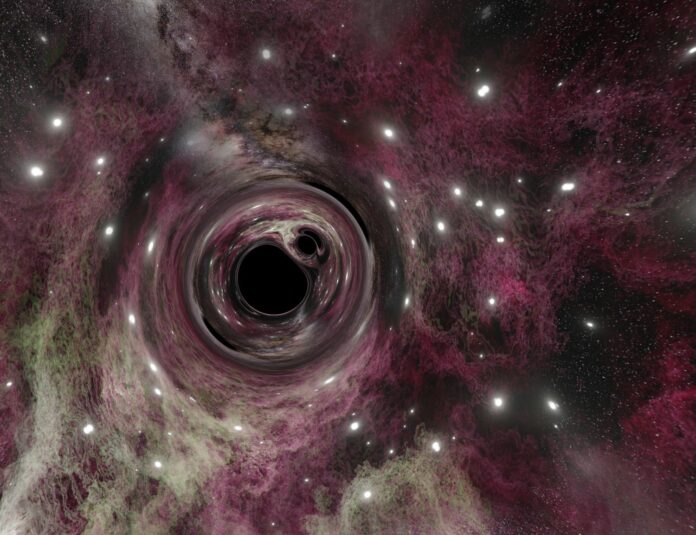A population of stellar-mass black holes that are more massive than those previously seen have been discovered via gravitational-wave astronomy. Black holes created in isolated binaries have a maximum mass governed by star winds, mixing processes, and interactions between the binary elements.
The discovery of gravitational waves in 2015, made possible by the merging of two black holes, provided a fresh perspective on the cosmos. Since then, dozens of similar sightings have aroused astrophysicists’ interest in discovering their origins.
A team of researchers, including some from the University of Geneva (UNIGE), Northwestern University, and the University of Florida (UF), challenged earlier theories by predicting the existence of merging massive, 30 solar mass black hole binaries in Milky Way-like galaxies thanks to the POSYDON code’s recent significant advancements in simulating binary-star populations.
The POSYDON collaboration has made significant strides in simulating binary-star populations. This work is helping to provide more accurate answers and reconcile theoretical predictions with observational data.
Interpreting the origins of merging binary black holes requires comparing theoretical model predictions with actual observations. The technique used to model these systems is known as “binary population synthesis,”- which simulates the evolution of tens of millions of binary star systems to estimate the statistical properties of the resulting gravitational-wave source population.
However, until recently, scientists have depended on models that approximatively mimic the evolution of the stars and their binary interactions to accomplish this in an acceptable amount of time. Consequently, making single and binary star physics too simple results in less precise predictions.
Scientists simulated the binary-star systems from their birth to the formation of the binary black hole systems. Designed as open-source software, POSYDON leverages a pre-computed large library of detailed single- and binary-star simulations to predict the evolution of isolated binary systems.
This simulation technique is not directly relevant for binary population synthesis because these intricate simulations may take up to 100 CPU hours to conduct on a supercomputer. However, POSYDON may use this substantial dataset in combination with machine learning techniques to forecast the whole evolution of binary systems in less than a second by precompiling a library of simulations that cover the entire parameter space of initial circumstances. This accuracy increases while maintaining a speed equivalent to earlier quick population synthesis codes.
Vicky Kalogera, a Daniel I. Linzer Distinguished University Professor of Physics and Astronomy in the Department of Physics and Astronomy at Northwestern, said, “Models before POSYDON predicted a nominal formation rate of merging binary black holes in galaxies similar to the Milky Way, and they particularly did not anticipate the existence of merging black holes as massive as 30 times the mass of our sun. POSYDON has demonstrated that such massive black holes might exist in Milky Way-like galaxies.”
This work is the first to examine merging binary black holes using the recently released open-source POSYDON software. It offers a fresh understanding of how merging black holes develop in galaxies like ours. To simulate binaries in a wider variety of galaxy types, the research team is currently working on a new version of POSYDON that will feature a larger library of intricate stellar and binary simulations.
Journal Reference:
- Bavera, S.S., Fragos, T., Zapartas, E. et al. The formation of merging black holes with masses beyond 30 M⊙ at solar metallicity. Nature Astronomy (2023). DOI: 10.1038/s41550-023-02018-5
